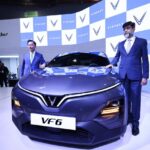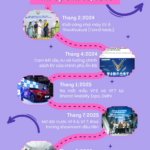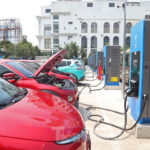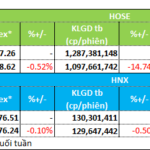Vietnam Engine and Agricultural Machinery Corporation (VEAM, code: VEA) is recognized as Vietnam’s largest automotive company at the present. Notably, its main business of manufacturing and selling commercial vehicles is rather understated, and VEAM’s value lies primarily in its investments in renowned automotive brands.
Currently, VEAM holds 30% of Honda Vietnam, 20% of Toyota Vietnam, and 25% of Ford Vietnam. The company profits from these investments through shared profits and annual commodity dividends.
In the first half of 2025 alone, VEAM’s net revenue exceeded VND 2,087 billion, while its net income reached VND 3,410 billion. This remarkable performance is largely attributed to profits from joint ventures and associates, contributing nearly VND 3,069 billion.
Additionally, according to the parent company’s financial statements, VEAM received nearly VND 5,932 billion in dividends from Honda Vietnam in the first six months of the year. In previous years, VEAM also collected thousands of billions of dong in dividends from its joint ventures and associates, mainly from Honda Vietnam.
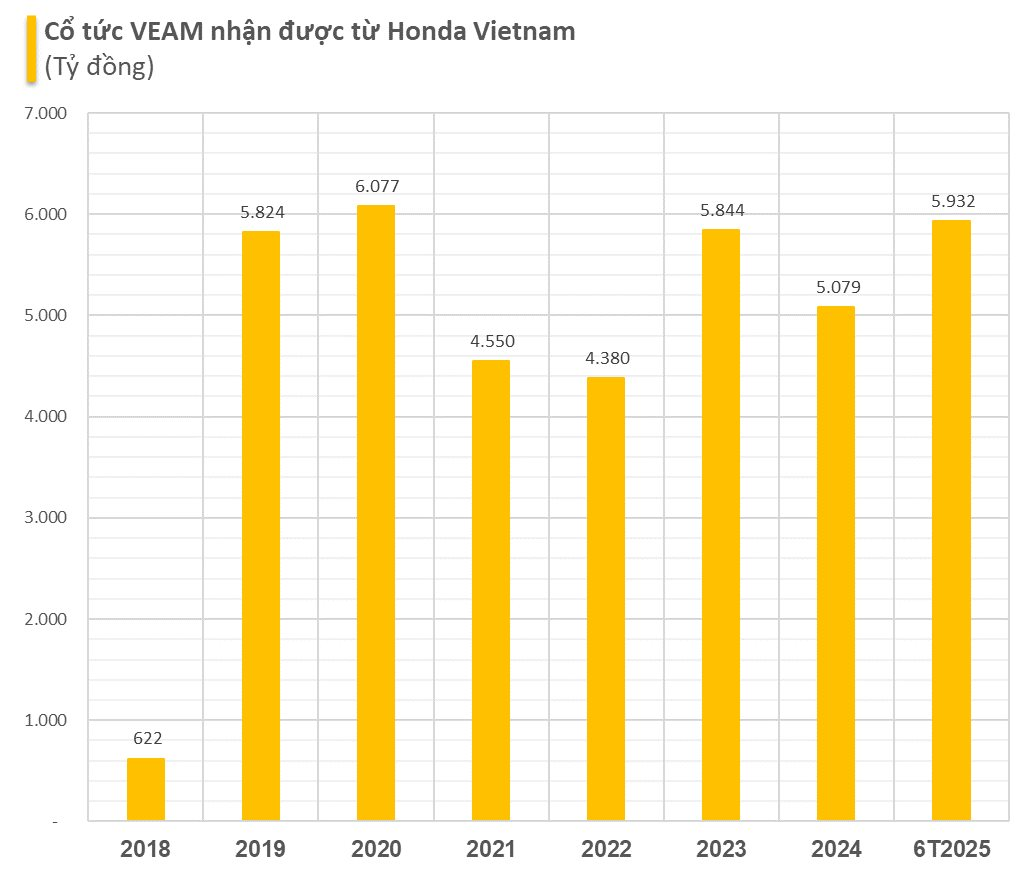
As VEAM’s operations are closely linked to these automotive brands, its performance is significantly influenced by the motorcycle and automobile markets, despite not being directly involved in their trading.
In Directive 20 on urgent tasks to prevent and address environmental pollution, the Prime Minister instructed the Hanoi People’s Committee to implement solutions and measures to encourage organizations and individuals to switch to alternative vehicles. The goal is to ensure that by July 1, 2026, there will be no fossil fuel-powered motorcycles or scooters circulating within Ring Road 1.
The Prime Minister also set a roadmap starting from January 1, 2028, aiming to eliminate fossil fuel-powered motorcycles and scooters and restrict private fossil fuel-powered cars within Ring Road 1 and Ring Road 2. From 2030 onwards, this initiative will be expanded to include Ring Road 3.
Honda Vietnam’s financial report for the fiscal year 2025 (ending March 31, 2025) revealed that Honda will modularize vehicle models specifically designed for electric vehicles and commence production at a dedicated high-efficiency electric motorcycle factory in India in 2028. Honda plans to offer electric motorcycle models at more affordable prices to a wider range of customers. The company aims to become the market leader in electric motorcycle sales.
In the long term, Honda targets a global market share of 50% and a return on sales (ROS) of over 15% by 2030, encompassing both internal combustion engine (ICE) and electric motorcycle lines.
The Future of Automotive Excellence: VinFast Creates a Stir in India
“Beyond battery and range, VinFast has another crucial card up its sleeve that Indians are eagerly awaiting: the unveiling of its cutting-edge technology and innovative features. With a focus on delivering an exceptional driving experience, VinFast is poised to revolutionize the Indian market with its forward-thinking approach and game-changing offerings.”
“VinFast’s Progress in India Two Years After Meeting with Indian Billionaire: A $10 Billion Investment Prospect”
The Adani Group has strong ties to the automotive industry, particularly in the realm of electric vehicles (EVs) and clean transportation solutions.
The Electric Vehicle Revolution: Why Commercial Drivers Are Hesitant to Make the Switch.
“Making the switch from a gas-guzzler to an electric vehicle can be a daunting task for any driver. The fear of the unknown, ranging from battery performance to the availability of charging stations and safety concerns, is enough to make anyone hesitant. However, it’s time to put these worries to rest and embrace the future of automotive technology. Electric vehicles offer a cost-effective and environmentally friendly alternative that is here to stay.”
“Fire Safety First: Why Dorms and Apartments Should Focus on Fire Hazard Prevention Rather Than Electric Vehicle Bans”
The reluctance of some apartment buildings and landlords to accommodate electric vehicle charging is understandable, given the lack of established risk management and fire safety measures. To address this challenge, it is imperative for residential communities to take the lead in developing a comprehensive and civilized electric vehicle management model.


























